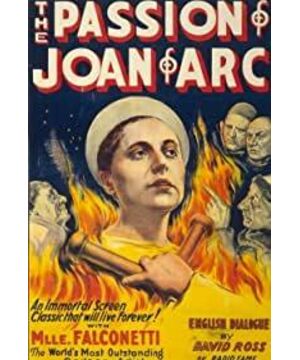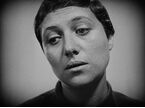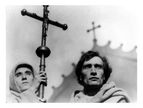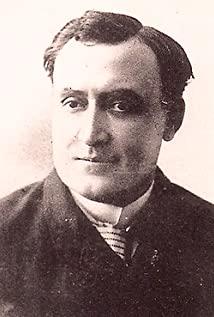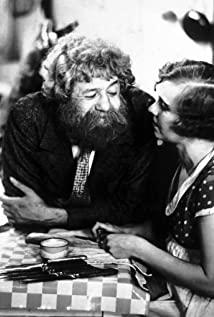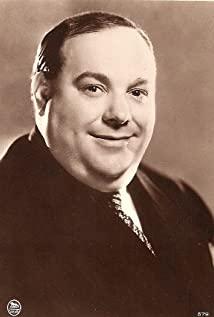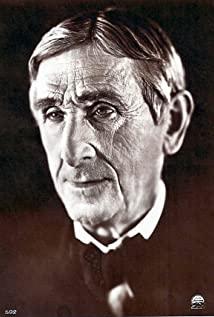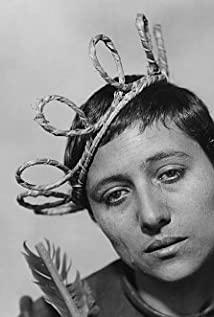Carl Theodor Dreye was the greatest Danish director of the 20th century. Born in Copenhagen on February 3, 1889, he had a bleak childhood and lived with poor adoptive parents. The lack of care and freedom in his childhood made him seek spiritual comfort from religious beliefs.
As an adult, Dreyer first became a reporter and then a director. Religious themes frequently appear in his films, such as "La passion de Jeanne d'Arc" (La passion de Jeanne d'Arc, 1928). .
Dreyer was 39 years old that year and was already a successful director. He had made seven feature films before. The French studios Societe Generale signed a generous contract with him, promising him to film as he pleases.
He got a large budget and a script from the producer, which was the deed of "Joan of Arc" that was vindicated by the Roman Catholic court several years ago. The script did not suit him and was discarded, and Dreyer began to study the record of Joan of Arc's trial. These records tell how a farm girl from Orleans disguised as a man and led the French army to defeat the British occupation army, and how was captured by the French army loyal to Britain and sent to the religious court. She believed that she was fighting for the revelation of God, but the religious court accused her of being heresy. In the end, Joan was burned to death on the stake.
Based on the trial record, Dreyer combined the 29 harsh tortures that Joan suffered before his death into one, showing a woman who combines simplicity, nobility and suffering, as well as the vile and cunning faces of the judges.
Maria Falconetti , the actor of Joan of Arc, was originally a stage actor in Paris, but was discovered by Dreyer while performing in a small civilian theater. Dreyer once recalled that although Fao Conneti was acting in a light comedy at the time, something on her face moved him, " There is a soul hidden under the mask. "
Dreyer is very strict with any detail. He digs into the old paper to study the knowledge of medieval history, and strives to perfectly restore the props, costumes and scenes of that era.
The artist of the film is Hermann Warm, who is famous all over the world with Das Cabinet des Dr. Caligari (1920). He built the largest and most luxurious miniature castle set in Europe at the time for the film. There is also a model of this scene at the Danish Film Museum in Copenhagen.
In order to support the voluminous lighting equipment and staff, the outer wall is made of thick concrete, with tall towers erected on the four corners. The inner wall can be moved flexibly on the track. Inside the wall, chapels, houses, and religious courts are built with a strange geometric structure, and the doors and windows are staggered, creating a sense of disharmonious visual unity. The film ended up costing nearly 10 million francs, making it the most expensive film of the year.
The visual style of the film is the result of an international cooperation. The director Dreyer is a Danish, the artist is a German, the photographer is a Frenchman Rudolph Maté (Rudolph Maté), as David Podwell said in "Film Art": "Dreyer used The French-style design uses meticulous swing photography and sports, and to a certain extent, it composes its own scenes with the partial close-up shots of the action in the Soviet montage way. "
In "The Dilemma of Joan of Arc", De Layet implements his pursuit of realism and refuses to use makeup, disguise and wigs . When the script requested that Jeanne's hair be cut off, Fao Conneti's hair was actually cut off.
The test of Fao Conneti goes far beyond that. On the set, Dreyer forced her to kneel on the stone with the pain, and then tried to erase all her expressions, so that the audience would read the depressed or inner pain from her face. He took the same shots over and over again, in order to find a subtle expression that was just right in the studio.
Robert Bresson (Robert Bresson)’s directorial style is similar to it. In 1962, when filming "Jan of Arc" (Procès de Jeanne d'Arc), he also asked the actors to repeat the same scene over and over again. , Until their performances no longer showed any emotions.
Dreyer wanted to get a subconscious spontaneous reaction from Fao Conneti, not an expression from the show. The final result was recognized by the whole world. Perhaps this is one of the reasons why she didn't make a movie again. The impression left by this face is too deep, and people will certainly not agree with her role outside of Joan of Arc. This also makes the film appear detached from time, like a true collection of ancient art, not just a movie.
The film adopts an open composition, almost entirely composed of close-ups of human faces. A large number of close-ups of Joan's face became a reflection of the soul, showing her strong, unyielding, fragile and sensitive soul.
Delaier explained that he hopes to avoid the temptation of the pictures often found in historical dramas by means of close-up shots. Except for the characters, the only scenery in the film is the walls and vaults. Nothing exists just for good looks. The audience will not be distracted by the scenery, costumes, props, etc. The audience must face the characters' hearts and watch the religious courts stripped of justice, the group of fat, mean, vicious hypocrites, and the sacred and tragic fate of Joan of Arc.
However, after the film was released, it didn't get the attention it deserved, and it lost at the box office. At that time, it was defined as an art film with high music and few .
One of the main reasons for this result is the investment behavior of spending a lot of money on silent films at the end of the silent film era. Although the sound film was very immature at the time when it was just born, it attracted the attention of all audiences at once. In addition, some critics clamored that it is impossible for the Danes to make good French national heroes, and the film’s dismal box office is reasonable.
Although "The Dilemma of Joan of Arc" has now achieved a lofty status in film history, from the perspective of the film itself, shooting trial subjects in silent film is indeed its own flaw. A large number of dialogues need to be expressed with subtitles, destroying the rhythm and atmosphere of the film.
In fact, Dreyer also hoped to make a dialogue film at the beginning, but since the sound technology has just started, most people strongly opposed it, so it was not realized.
"The Dilemma of Joan of Arc" is hailed as "the film with the greatest density of human souls in the history of film ". It transcends the boundaries of history and characters, and reaches the height of universality and humanitarianism. Dreyer used this stunning film as a silent film era to draw a great end.
Public number: movie set box (laodianyinghualang)
View more about The Passion of Joan of Arc reviews


